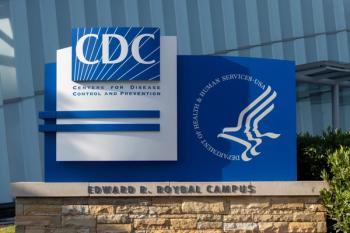
High Response Rate Found in Experimental Lung Cancer Immunotherapy
Anti-PDL1 agent with standard chemotherapy combination will now move to multiple phase 3 studies.
Anti-PDL1 agent with standard chemotherapy combination will now move to multiple phase 3 studies.
An experimental treatment for lung cancer will now advance to phase 3 clinical studies following the results of a promising early stage trial.
Set to be presented at the annual meeting of the American Society of Clinical Oncology (ASCO), the study evaluated an anti-PDL1 agent in combination with standard chemotherapy for the treatment of advanced non-small cell lung cancer. The study enrolled patients with untreated non-small cell lung cancer who received a standard platinum-based chemotherapy regimen of either paclitaxel and carboplatin; pemetrexed and carboplatin; or nab-paclitaxel and carboplatin, with each group also receiving MPDL3280A, an antibody that targets PD-L1.
The first 37 patients showed promising response rates between 60 and 75%, comparing favorably with historical outcomes of chemotherapy alone, which are approximately 30 to 35%.
Furthermore, 2 complete responses were documented with no evidence of lung cancer on CT scans.
"A complete response is not typically seen in patients with stage IV lung cancer," lead author Stephen V. Liu, MD, said in a press release. "And the response rates seen with MPDL3280A and chemotherapy were higher than one would expect with chemotherapy alone."
The combination therapy was well tolerated by patients and there were no unexpected toxicities. The most common adverse events in the trial were associated with chemotherapy, including nausea, fatigue, and constipation.
The side effects associated with MPDL3280A included anemia, low neutrophil levels, and low platelet counts. These anti-PD-L1 and anti-PD1 antibodies were developed with the goal of boosting T-cell activity.
"The body needs to tightly regulate immune function," Dr. Liu said. "When T-cells are activated under normal conditions, they are quickly suppressed, to prevent over-activation. This suppression is controlled by the interaction of PD1 and PD-L1, the protein that binds to the PD1 receptor. The problem is that many tumors express PD-L1 and are able to escape T-cell immunity. So these drugs are designed to keep the immune signal on."
The FDA previously approved 2 anti-PD1 antibodies for refractory melanoma and 1 anti-PD1 antibody for refractory squamous cell lung cancer.
"MPDL3280A represents an approach at targeting not PD1, but its ligand, PD-L1, which may provide some advantages,” Dr. Liu said. “The combination with chemotherapy in the first line setting certainly deserves further study.”
Newsletter
Stay informed on drug updates, treatment guidelines, and pharmacy practice trends—subscribe to Pharmacy Times for weekly clinical insights.




















































































































































































































